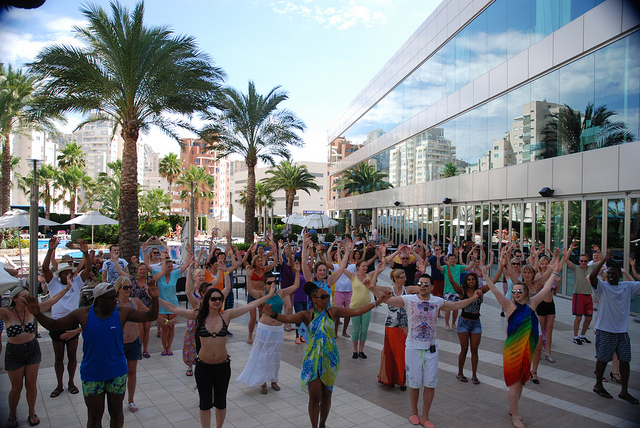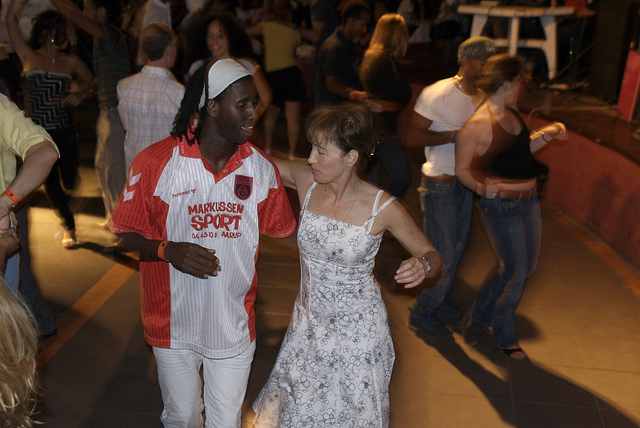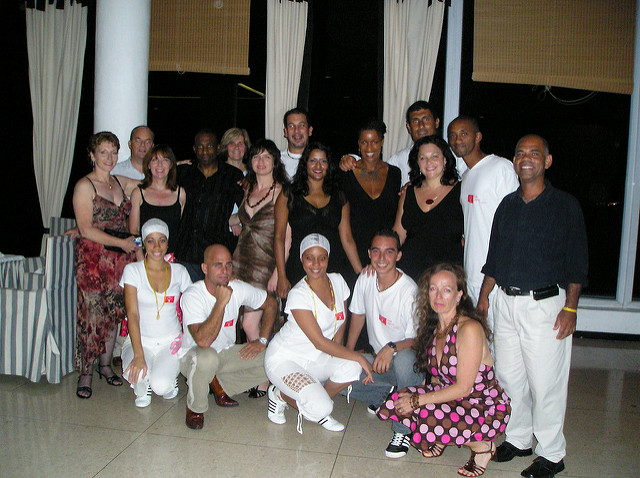Cross Body v Cuban Salsa - What is the difference?
26/04/2016

How many of you know the difference? Or even aware that there was one? As there is many forms of Salsa it’s a recurring question that people ask. So here we delve into the world of Salsa to find out exactly what the difference is.
Quick Background on Salsa
The name Salsa was a term that originated in New York City in the 1960s/70s to describe a popular social dance that had its roots in the Latin American communities in the city. This new social dance had emerged from other earlier dance forms such as Son, Mambo, Cha cha cha. Later on it added Afro-Cuban and Afro-Caribbean dances like Pachanga. You can read all about the history of Salsa and the music on a previous blog here.
Cuban Salsa v Cross Body
While the Cali is a form of Salsa, the two most common forms of Salsa performed today is Cuban Salsa and Cross Body.
Cross Body Salsa (L.A. & N.Y. Salsa)
Cross Body is that where Cuban is danced in circular motions, Cross Body is danced on linear movements, i.e. dance in a line. The most important part of Cross Body is what is referred to as the “cross-body lead”, with the participants dancing face-to-face with each other. At a point, the male dancer (the lead) will turn first and the female dancer turn later after she has passed the male dancer, hence the “cross-body lead” name. There is a simple, short video showing the basic moves of the “cross-body lead”here.
The other important feature, and this is where it essentially shows the difference is the beat that you would dance to. It gets a bit tricky to explain, but hopefully you’ll understand.
Cross Body, has two sub categories – L.A. style and N.Y./Mambo style. They may also be called On1 and On2 respectively. It’s called On1 or On2 because with L.A. style, you accentuate, or make more visible the 1st (and 5th) beat, and danced quick-quick-slow, quick-quick-slow. L.A. style is a lot more flamboyant and extravagance dance that represents the flash and glamour of Los Angeles. N.Y./Mambo differs in that the form is danced to the conga drums, and you accentuate the 2nd (and 6th) beat. This is why N.Y./Mambo is also called On2. The sound made by the beats of the conga drums in N.Y./Mambo creates the illusion for the dancers that they have more time, and a consistent flow. On2 also creates the similar feeling you would get if you danced an earlier form of Salsa, Cuban Son which, by the way, is still a popular form of dance in Cuba.
There is a brilliant short video explaining N.Y./Mambo style on Youtube, which you can view here.

Cuban Salsa
Cuban Salsa, also known as Casino, differs with Cross Body in that it is danced in a circular motion, with the male dancer usually in the centre and the female dancing on the outside around the male dancer. It doesn’t have the “cross-body lead” and gives more freedom of movement to the female dancer, compared to the male dancer. It isn’t as mechanical as the others and allows more improvisation or references to other Afro-Cuban dances, such as Rumba. Musically, it is also different to Cross Body salsa too. It’s a form of dance that incorporates a lot of Cuban folkloric and ideas, and is very popular in Cuba today and is considered part of the Cuban social and cultural life.
And there you have it, now you know the difference between these Salsa styles. Why not take it up today, and get that flavour of Latin/Cuban culture in you.
Club Dance Holidays run a number of Salsa trips including the beautiful island of Cuba, the home of Salsa. For 7 or 10 nights in May and October, have the chance to experience Salsa in the heart of Havana, as well as the chance of experiencing the beauty and culture of Cuba.
Also there is the opportunity to celebrate New Year in style – 14 nights in Cuba from 29th December 2016 to 12th January 2017.
